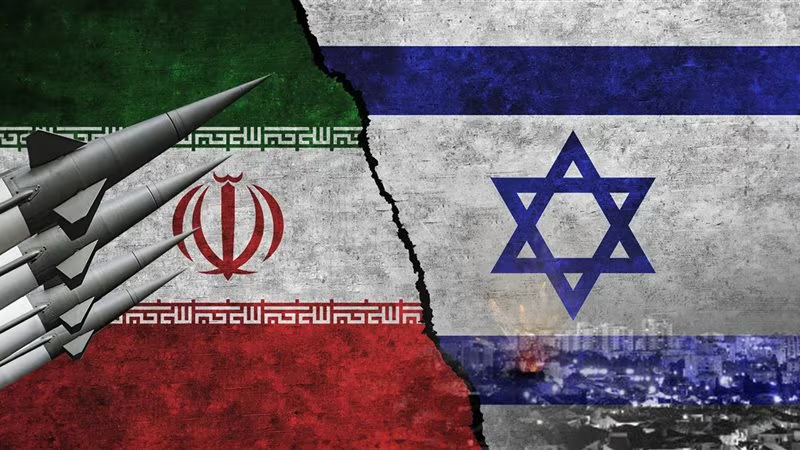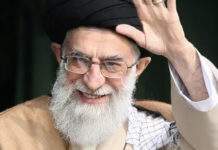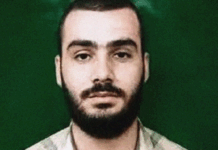Osiągnięcia reżimu syryjskiego i jego sojuszników w południowej Syrii w ostatnich miesiącach wywołały narastający niepokój w Jordanii wobec coraz większej obecności proirańskich sił na granicy Syria-Jordania. Król Jordanii 'Abdallah II wyraził zaniepokojenie we wrześniu bieżącego roku: „Pilnie przypatrujemy się rozwojowi [sytuacji] w południowej Syrii i obrona naszej północnej granicy przed organizacjami terrorystycznymi i zagranicznymi milicjami jest dla nas najwyższym priorytetem… Jesteśmy gotowi i zdolni do silnej reakcji na każdą eskalację, jaka może nam grozić, czy to ze strony ISIS, czy jakiejkolwiek zagranicznej grupy walczącej w Syrii”[1]. Obawy Jordanii dotyczące ekspansji Iranu w regionie nie są niczym nowym. Król Abdallah ostrzegał już w 2004 r. przed wyłonieniem się “szyickiego półksiężyca” – terytorialnego continuum rozciągającego się od Iranu, przez Irak i Syrię do Libanu.
W próbie zapobieżenia konsolidacji obecności tych sił na jordańskiej granicy w ostatnich miesiącach Jordania i USA prowadzili intensywne rozmowy z Rosją, sojusznikiem reżimu syryjskiego, by wyznaczyć strefę de-eskalacji w południowej Syrii, podobną do tych, które zostały stworzone jako część rozmów Astana sponsorowanych przez Rosję, Iran i Turcję. W lipcu 2017 r. podpisano w Ammanie porozumienie o zawieszeniu broni w południowej Syrii pod egidą Jordanii, USA i Rosji. Doprowadziło to do podpisania 8 listopada 2017 r. memorandum zasad przez te trzy kraje o ustanowieniu strefy de-eskalacji w południowej Syrii.
Wydaje się jednak, że to memorandum zasad nie uśmierzyło obaw Jordanii. Szczegóły memorandum nie zostały w pełni ujawnione[2], ale, według doniesień, wyłoniły się silne różnice zdań między podpisującymi państwami, szczególnie w sprawie obecności sił proirańskich. Jordańska gazeta”Al-Ghad” informowała, że „w nowym memorandum zasad strony syryjskie – reżim i opozycja w południowej Syrii – zobowiązały się do oczyszczenia terytoriów pod ich kontrolą z zagranicznych organizacji i milicji”[3]. Ale przedstawiciele rosyjscy, wraz z ministrem spraw zagranicznych, Siergiejem Ławrowem, powiedzieli, że Rosja nie podpisała żadnej klauzuli wymagającej, by związane z Iranem siły opuściły Syrię[4].
Ponadto w ostatnich dniach arabskie i zagraniczne media informowały, że Iran istotnie konsoliduje swoją obecność w południowej Syrii. Według tych doniesień, Brygada 313, siła stacjonująca na obszarze Izra, 30 km od jordańskiej granicy, składa się z syryjskich żołnierzy, ale jest bezpośrednio podporządkowana Korpusowi Strażników Rewolucji Islamskiej w Iranie (IRGC)[5]. Informowano również, że Iran założył bazę wojskową na obszarze Al-Kiswa, 13 km na południe od Damaszku[6].
W świetle tego rozwoju sytuacji ostatnio publikowane artykuły w Jordanii wyrażały obawy o obecność irańską w południowej Syrii, a nawet wzywały do przeszkodzenia temu środkami militarnymi. Niektórzy radzili nie liczenie na memorandum zasad i na strefy deeskalacji jakie ma ustanowić. Artykuł w rządowej gazecie „Al-Rai” ostro krytykował USA za brak działań przeciwko ekspansji Iranu w regionie.
Poniżej znajdują się fragmenty tych artykułów [dalsza część raportu nie jest spolszczona]:
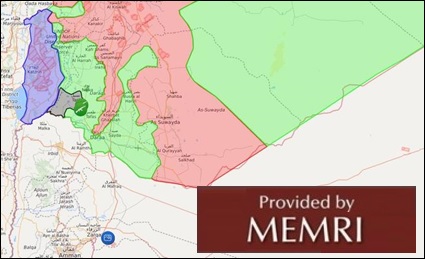
Al-Rai Article: U.S. Doing Nothing To Prevent Iranian Expansion In Region
Faisal Malkawi, a senior member of the Al-Rai editorial board, warned about the Iranian expansion in the region and the emergence of a territorial continuum from Iran to the Mediterranean through Iraq, Syria and Lebanon. He also criticized America’s failure to prevent this development, writing: „The puzzling fact is that the U.S. under Donald Trump, which proclaims [the adoption of] a radical strategy vis-à-vis Iran, its nuclear program and its interference in the region, is in practice doing nothing about the Iranian expansion. This is especially [grave] in light of the imminent completion of the land route from Tehran to Beirut. This route passes through American influence zones and close to U.S. bases in northeastern Syria. The Americans and their allies, the Syrian Democratic Forces, also have troops and bases east of Deir Al-Zor and in Al-Tanaf, while [only] kilometers away, within their line of sight, IRGC and Hizbullah militia forces [recently] entered the Syrian city of Al-Bukamal and held public celebrations there… The Iranian presence on the Syria-Iraq border allows Tehran to complete its land route and defend it militarily and strategically as an influence and interference zone that will be part of any future solution…”[7]
Former Information Minister Al-Qallab: We Must Not Allow Militias On Our Border, Even At Cost Of Military Action
In his column in the government daily Al-Rai, former Jordanian information minister Saleh Al-Qallab called on Jordan to be very cautious despite the signing of the memorandum of principles on the de-escalation zone in southern Syria, and to continue insisting on the withdrawal of the Iranian forces from Syria, even if this requires military action against them: „Having heard provocative statements from Ali Akbar Velayati, an advisor to Iran’s Supreme Leader, who was visiting Iranian forces and the militias under their command in Aleppo,[8] and since those who closely monitor the Syrian arena have revealed that Iran has a military base south of Damascus, [a base] that faces Jordan, rather than the Israeli occupation of the Syrian Golan Heights, we must think very carefully before applauding the Russian and American decision to establish a de-escalation zone in southwestern Syria…
„We must not fall asleep or start ululating in joy over this agreement, whose details are not yet fully known and which is still [nothing but] ink on paper… We must not rest on our laurels, for we have heard the statements of [Iranian President] Hassan Rohani, [Khamenei’s advisor] Ali Akbar Velayati and [Hizbullah secretary-general] Hassan Nasrallah. Before celebrating the promise to establish a [quiet] front in southwestern Syria, we must insist on the condition that the Iranians leave our sister state [Syria], starting with the removal of [their forces] from our northern border. We must not tolerate any militia close to the border, even if this obligates us [to deploy] the Arab Jordanian army. What is happening in Syria is a game between nations. This is a dirty game, [so] we must not believe anyone’s [promises regarding the removal of the Iranian forces] until we see it with our own eyes.”[9]
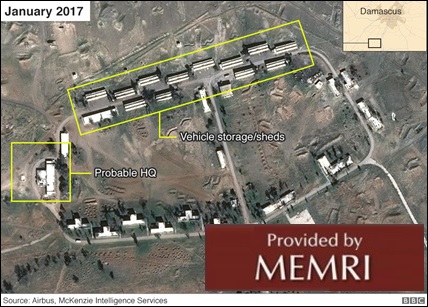
Al-Dustour Board Chairman: Iran’s Presence On Our Border – An Intolerable Strategic Threat
Muhammad Daoudia, board chairman of the Al-Dustour daily, wrote under the title „The Iranian Threat to Jordan”: „Various Iranian leaders declare that their country is expanding and establishing itself in several Arab capitals – Baghdad, Sanaa, Beirut and Damascus – and this comes on top of the courtship between Iran and Hamas and Iran’s insistence on encroaching on our northern border. Senior Iranian military commanders and representatives of Iranian militias in the region have made public statements aimed at Jordan, sometimes intended to threaten it and sometimes to pressure it. [The former] commander of the Iranian Basij, General Mohammad Reza Naqdi, said that his Basij would maintain a presence in Jordan, just as it does in Lebanon and Palestine. Shi’ite fighters are streaming into Syria by the thousand, from Afghanistan, Lebanon, Iraq and Iran, under the command of [Iranian] General Qassem Soleimani and with the support of the IRGC and [its] Qods Force…
„From our perspective, the sectarian [i.e., Shi’ite] militias under Iran’s command are approaching our border from the north, taking the place of the ISIS terror organization and working to gain a foothold on this front, thus posing an ever-increasing security challenge for us. This will cause us to confront Iran along our 350-km border with Syria…
„Iran has begun to lay the foundations for a military industry in Syria and Lebanon, including facilities for manufacturing long-range missiles…[10]
„Iran’s conduct has prompted us to treat this 'Iranian neighbor’ as a strategic threat that cannot be accepted, forcing [us] to take the necessary measures to maintain security and stability on our border [and safeguard it] against any threat and any presence of the sectarian militias commanded by Iran…”[11]
Jordanian Researcher: The Establishment Of Brigade 313 And The Atmosphere In The Region Require Reassessment Of Our Position And Preparations For The Future
Muhammad Abu Rumman, a researcher at the Center of Strategic Studies in the University of Jordan, wrote in his column in Al-Ghad: „Despite the signing last Wednesday [November 8] of a de-escalation agreement in southern Syria… –[an agreement] intended to reinforce the July [2017] Amman agreement between the U.S. and Russia – the situation is apparently not so simple, considering that regional developments have turned the entire situation on its head…
„The new surprise [that occurred] during the preparations for the de-escalation agreement in southern Syria was the founding of local militias in Deraa (Brigade 313), which according to the Syrian opposition are sectarian in character, as well as militias in Izra which are fully supported by Iran’s IRGC and are modeled on local sectarian militias previously established in Iraq and Syria.
„This move involves considerable cunning on the part of the Iranians, for these militias are local and are somewhat removed from the Jordanian border, yet they were established for a more important [goal] in the next phase, namely bringing the sectarian conflict into the southern parts [of Syria] and securing Iran a foothold [there], as well as tools for confronting other elements… Such an Iranian move was probably not part of Jordan’s and America’s considerations and analyses…
„True, Jordan’s balanced and rational position amid this poisoned regional atmosphere is met with approval by a large portion of the Jordanian public, which fears that the region may slide into an [even] worse phase. Nevertheless, this position may exact a higher price [in the future]…”[12]
Al-Dustour Article: The Establishment Of Brigade 313 On The Jordanian Border Is Jordan’s And Iran’s Last Tango
'Oraib Al-Rantawi, director of the Center for Political Studies in Amman, wrote in his Al-Dustour column, under the title „Jordan’s and Iran’s Last Tango”: „Relations between countries are like a tango. They require two parties, and cannot develop unilaterally… Over the years, and perhaps throughout the last four decades, Jordan’s relations with Iran were based on two main criteria, from the Jordanian perspective: first, on whether Jordan’s relations with the Gulf [states] were [characterized by] crisis or by normalization, and second, [on the state of] the relations between Tehran and Washington. As a matter of principle, Jordan cannot disregard her two main allies, Washington and Riyadh…
„Every time Jordan wanted to convey a message of good will to Iran, it was met with a cold shoulder and with a blow. Amman’s and Tehran’s last tango occurred last night, when a Lebanese friend of mine asked me about Brigade 313 of [Iran’s] Revolutionary Guards Corps, which is [reportedly] being formed in southern Syria and is headquartered in the town of Izra in the Deraa Governorate… This is happening even though Tehran – one of the guarantors in the track of the Astana talks [on Syria] – is well aware of the Jordanian position which firmly demands that the 'sectarian militias’ [i.e., the Iranian forces and their affiliated Shi’ite militias] maintain a buffer zone between themselves and the Syria-Jordan border. Moreover, these reports arrive when the region is on the brink of the abyss, and it takes only a small push or some accidental unfortunate incident to [make it] slide to the bottom…”[13]
Former Information Minister Al-Ma’aita: Every Country Will Have To Defend Itself Against Iran’s Expansion Plan, Like It Did Against ISIS
Former Jordanian information minister Samih al-Ma’aita wrote in the Jordanian e-daily Amon News: „Jordan understands Iran’s moves and mentality very well, and [realizes] that Iran yearns to repeat what it has [already] done in Lebanon, Yemen, Bahrain and Iraq in additional [Arab] capitals…
„Jordan, which is inclined to oppose the Iranian expansion plan, yearns [to see] a deterrent Arab diplomacy vis-à-vis this plan. In any case, it seems that the Iranian-Arab issue will be the next [pressing] issue, now that ISIS has declined [in importance]. Perhaps each country will have to defend itself, as was the case with ISIS and the danger it posed, until something [finally] causes Iran to understand that it is part of the region rather than its master.”[14]
* Z. Harel is a research fellow at MEMRI.
[1] Al-Ghad (Jordan), September 13, 2017.
[2] Several maps of the de-escalation zone in southern Syria have appeared in the media, but they do not appear to be the official maps, which have not been released.
[3] Al-Ghad (Jordan), November 11, 2017.
[4] Facebook.com/Russianmilitaryinsyria, November 14, 2017.
[5] The establishment of such forces is a well-known Iranian tactic. See MEMRI reports: Inquiry & Analysis No. 1241, In Syria, High Rate Of Draft Dodging Triggers Intensive Military Recruitment Efforts By Syrian Regime, April 25, 2016; Inquiry & Analysis No. 1242, Syria Regime Establishing Popular Armed Militias Modeled On Iranian Basij, April 25, 2016.
[6] Bbc.com, November 10, 2017.
[7] Al-Rai (Jordan), November 16, 2017.
[8] During his Aleppo visit, Velayati said: „[Our] resistance front will begin in Iran, pass through Iraq, Syria and Lebanon, and reach Palestine.” Aksalser.com, November 8, 2017.
[9] Al-Rai (Jordan), November 14, 2017.
[10] For reports by a Syrian opposition website on a facility for manufacturing Iranian long-range Fateh 110 missiles near Hama, Syria, see MEMRI Special Dispatch No. 7004, Further Reporting By Syrian Opposition Website On Long-Range Missile Facility Near Baniyas: It Is Making Iranian Fateh-110 Missiles, July 11, 2017. About Iranian long-range missile facilities in Lebanon, see MEMRI Special Dispatch No. 6828, Kuwaiti Daily: Missile, Arms Factories Built By IRGC In Lebanon Have Recently Been Handed Over To Hizbullah, March 14, 2017.
[11] Al-Dustour (Iran), November 8, 2017.
[12] Al-Ghad (Jordan), November 13, 2017.
[13] Al-Dustour (Jordan), November 10, 2017.
[14] Ammonnews.net, November 8, 2017.






